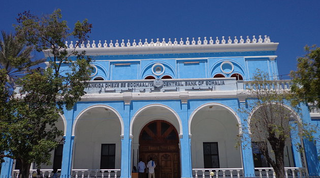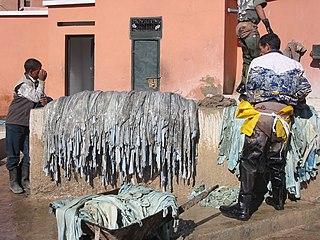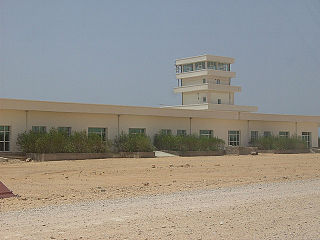
Somalia, officially the Federal Republic of Somalia, is a sovereign country in the Horn of Africa. It is bordered by Ethiopia to the west, the Gulf of Aden to the north, the Guardafui Channel and Somali Sea to the east, and Kenya to the southwest. Somalia has the longest coastline on Africa's mainland. Its terrain consists mainly of plateaus, plains, and highlands. Hot conditions prevail year-round, with periodic monsoon winds and irregular rainfall.

Despite two decades of civil war, the economy of Somalia has survived as an informal economy, based mainly on livestock, remittance/money transfers from abroad, and telecommunications. Somalia is classified by the United Nations as a least developed country, with the majority of its population being dependent on agriculture and livestock for their livelihood. Due to a dearth of formal government statistics and the recent civil war, it is difficult to gauge the size or growth of the economy. For 1994, the CIA estimated the GDP at purchasing power parity (PPP) to be $3.3 billion. In 2001, it was estimated to be $4.1 billion. By 2009, the CIA estimated that the PPP GDP had grown to $5.731 billion, with a projected real growth rate of 2.6%. In 2014, the International Monetary Fund estimated economic activity to have expanded by 3.7 percent primarily driven by growth in the primary sector and secondary sector. According to a 2007 British Chambers of Commerce report, the private sector has experienced growth, particularly in the service sector. Unlike the pre-civil war period when most services and the industrial sector were government-run, there has been substantial, albeit unmeasured, private investment in commercial activities; this has been largely financed by the Somali diaspora, and includes trade and marketing, money transfer services, transportation, communications, fishery equipment, airlines, telecommunications, education, health, construction and hotels.

Transport in Somalia refers to the transportation networks and modes of transport in effect in Somalia. They include highways, airports and seaports, in addition to various forms of public and private vehicular, maritime and aerial transportation.

Tanning is the process of treating skins and hides of animals to produce leather. A tannery is the place where the skins are processed.

Puntland, officially the Puntland State of Somalia, is a Federal Member State in northeastern Somalia. Centred on the town of Garoowe in the Nugal province, its leaders declared the territory an autonomous state within Somalia in 1998.

Bosaso is a city in the northeastern Bari province (gobol) of Somalia. It is the seat of the Bosaso District. Located on the southern coast of the Gulf of Aden, the municipality serves as the region's commercial capital and is a major seaport within the autonomous Puntland state.

Garowe is the capital of Nugaal region and administrative capital of Puntland state in northeastern Somalia.

Hafun is a town in the northeastern Bari province of Somalia. Situated in Ras Hafun on the coast of the Guardafui Channel, it is the centre of the Hafun District, and the easternmost town in continental Africa. It is an ancient town previously known as Opone.
The Majeerteen is a Somali clan. It is one of the major Somali clans, with a vast traditional territory spanning 3 major regions of Somalia: Bari, Nugaal and Mudug. From Bosaso down to Garacad, the Majerteen are settled in what is literally considered to be the 'Horn of Africa'. Its members form a part of the Darod clan family, and primarily inhabit the Puntland state of northeastern Somalia.

Galdogob, also spelled Galdogob, is a town wholly administered by the semi-autonomous Puntland State of Somalia, and serves as the capital of the Galdogob District within the Mudug province. The town technically straddles the disputed 1950's-era Provisional Administrative Line (as depicted on virtually all worldwide maps, from north-central Somalia.

Bosaso Airport, also known as Bender Qassim International Airport, is an airport in Somalia. It sits at 11°16′32″N 49°9′0″E on the outer edge of the city of Bosaso, the commercial capital of the northeastern Puntland macro-region and adjacent to the Gulf of Aden. It is the fourth largest airport in the country after the Aden Adde International Airport in Mogadishu, the Hargeisa International Airport in Hargeisa and the Berbera Airport in Berbera.

Ostrich leather is the result of tanning skins taken from African ostriches farmed for their feathers, skin and meat. The leather is distinctive for its pattern of bumps or vacant quill follicles, ranged across a smooth field in varying densities. It requires an intricate, specialised and expensive production process making its aesthetic value costly.

Puntland, officially The Republic Of Puntland, is a region in northeastern Horn Africa, centered on Garowe in the Nugaal province. Its leaders declared the territory an autonomous state in 1998.
The Puntland Maritime Police Force (PMPF) is a security force based in Puntland, an autonomous region in northeastern Somalia. As of March 2012, the PMPF had around 500 personnel. The Force is eventually expected to comprise 1,000 personnel.

Agriculture in Somalia is a major employment activity and is the largest economic sector in the country. It contributes more than 65% to the national GDP from domestic distribution and exports to other parts of the continent, the Middle East and Europe.

The Port of Bosaso, also known as Bosaso Port, is the official seaport of Bosaso, the commercial capital of the autonomous Puntland region in northeastern Somalia. It is classified as a major class port. The port is operated by P&O Ports since 2017.
The Hafun Fishing Company (HFC) is a fishing and real estate firm headquartered in Bosaso, the commercial capital of the autonomous Puntland regional state in northeastern Somalia.
Agriculture is the third economic activity in Djibouti. Agriculture makes up 3 percent of the wider economy value. Djibouti depends on imports in most foods. Climatic conditions and poor soils limit farm output, and domestic food production meets about 15% of demand. 10% of the Djiboutian workforce are employed in agriculture.

Balanbale, also spelled as Balanbal, is the district in Galguduud region of Somalia. It is one of the large cities in Galgaduud with a large population. In recent times Balanbale was developing rapidly. As of 2016, the some projects are under enlargement construction.

Chouara Tannery is one of the three tanneries in the city of Fez, Morocco. Built in the 11th century, it is the largest tannery in the city. It is located in the Fes el Bali, the oldest medina quarter of the city, near the Saffarin Madrasa along the river. Since the inception of the city, the tanning industry has been continually operating in the same fashion as it did in the early centuries. Today, the tanning industry in the city is considered one of the main tourist attractions. The tanneries are packed with the round stone vessels filled with dye or white liquids for softening the hides. The leather goods produced in the tanneries are exported around the world.















